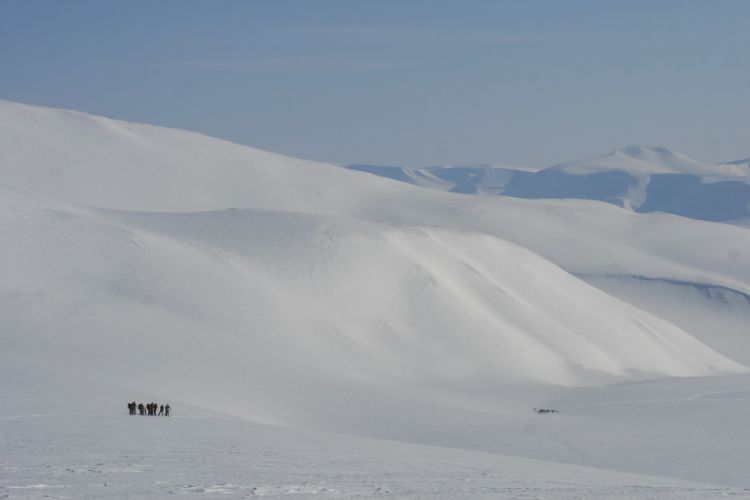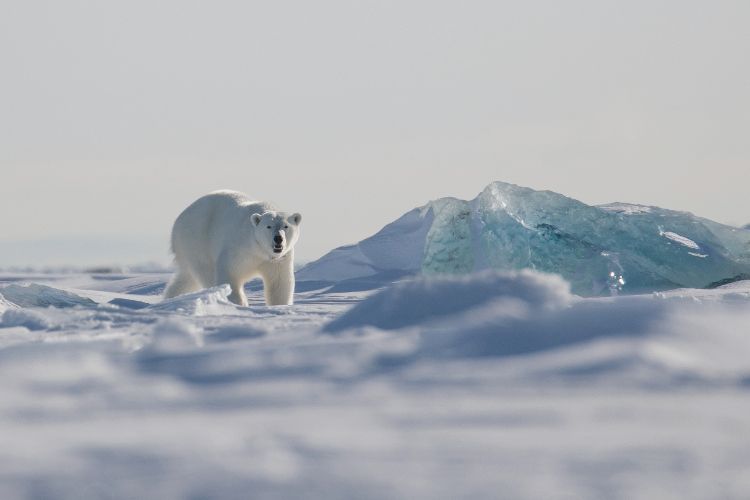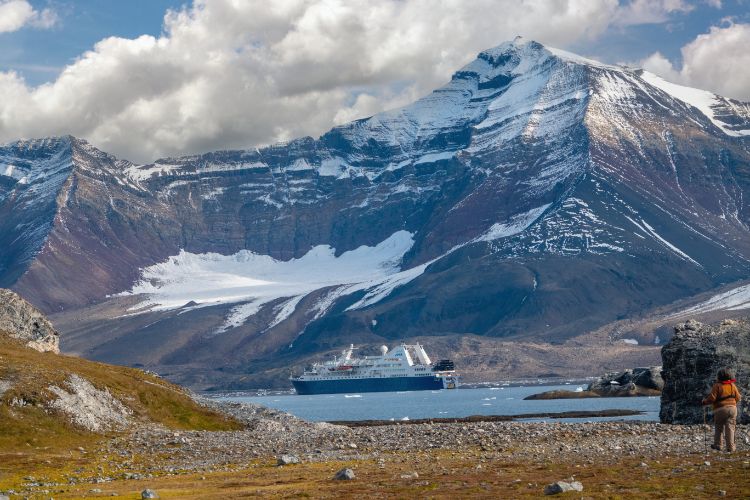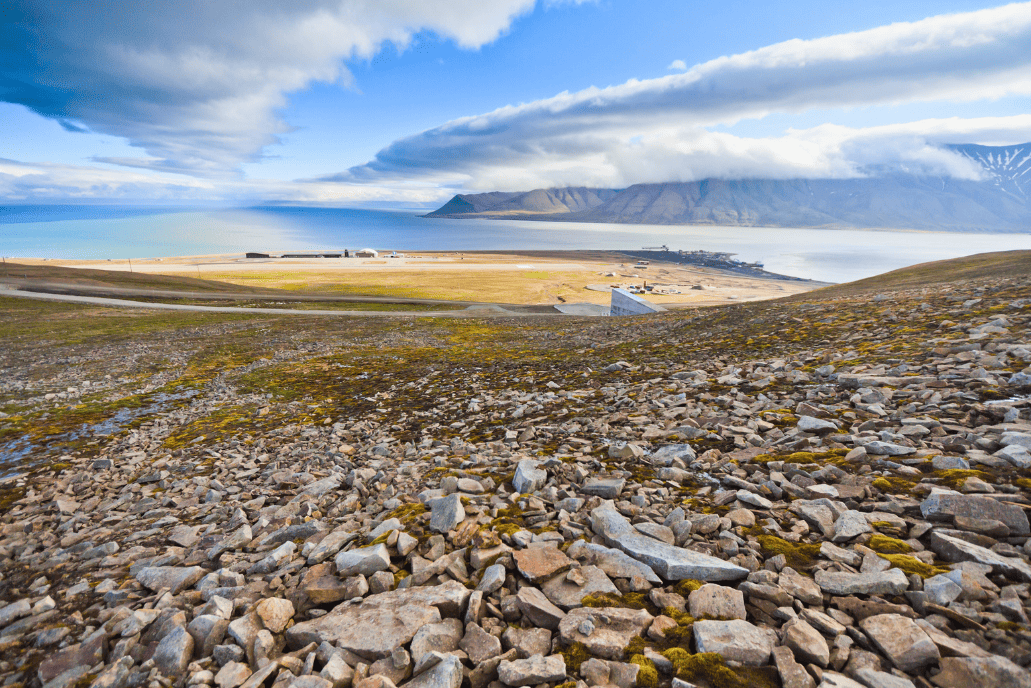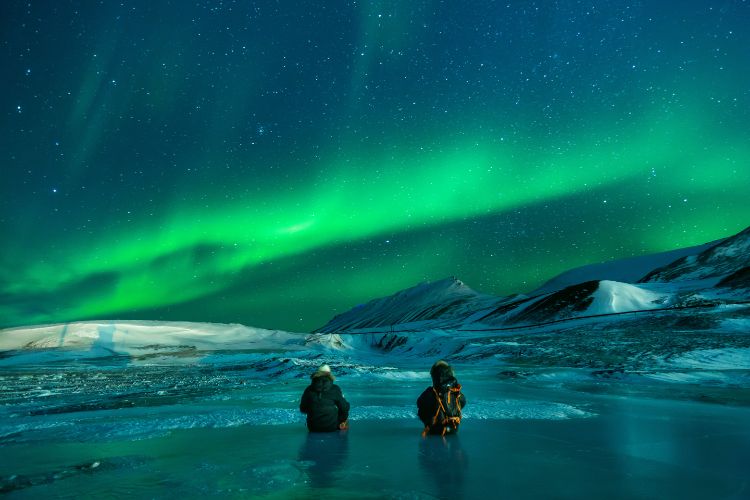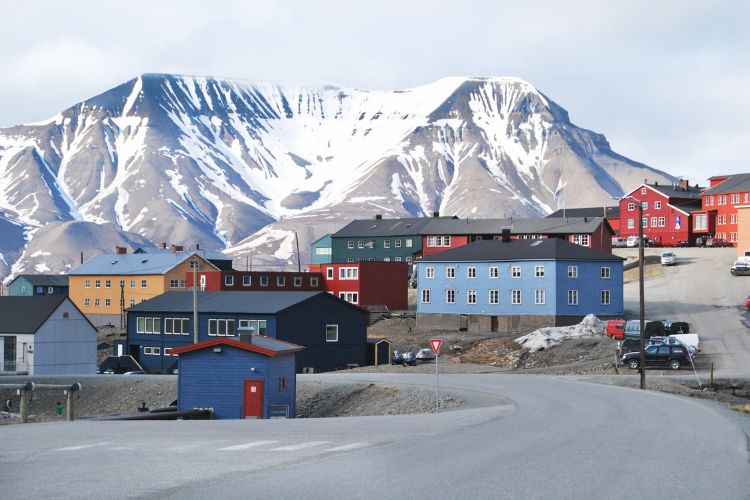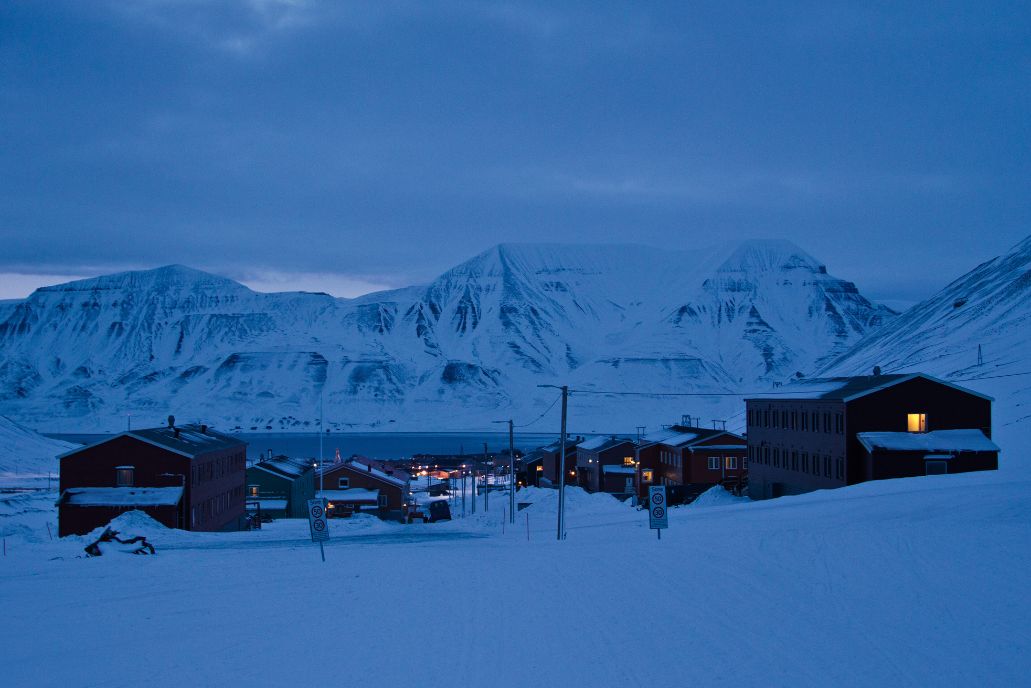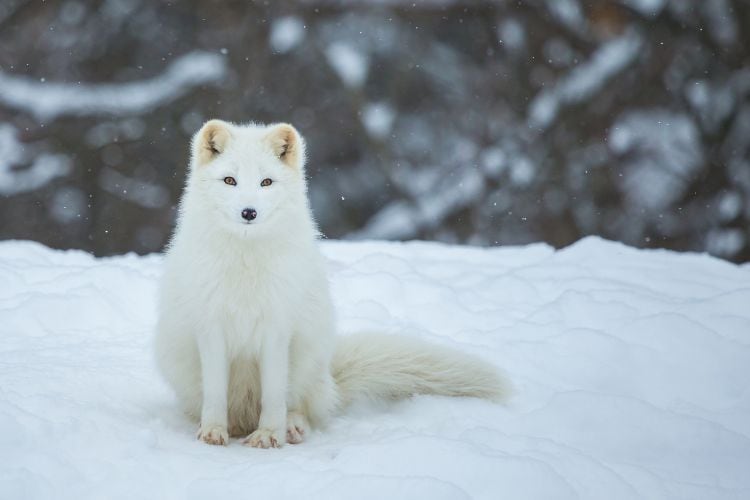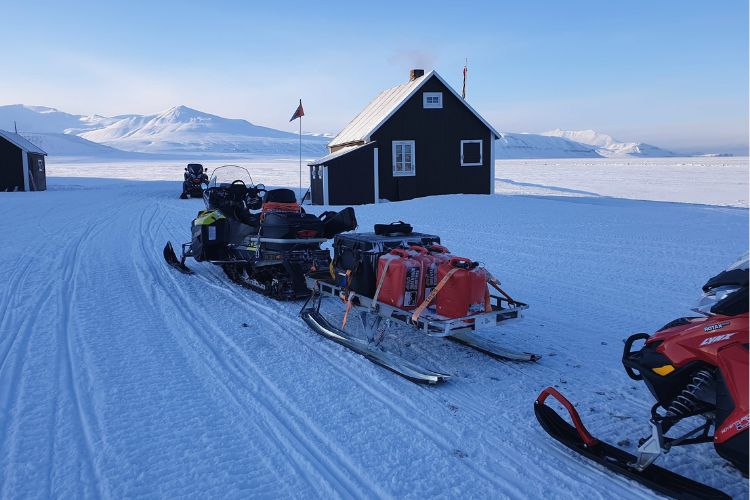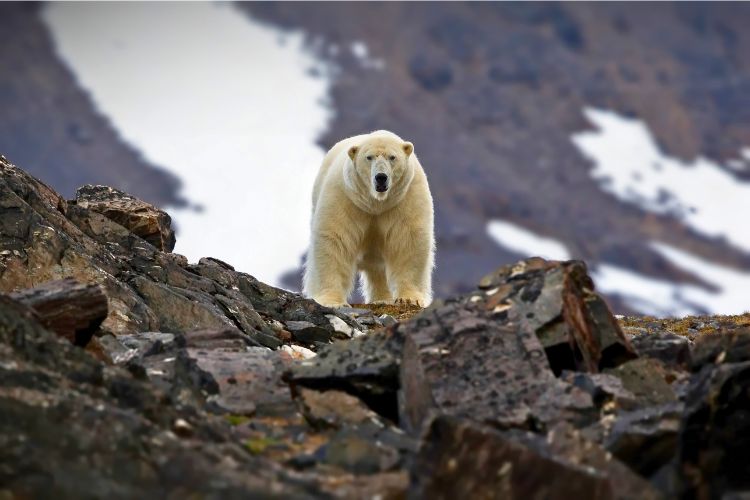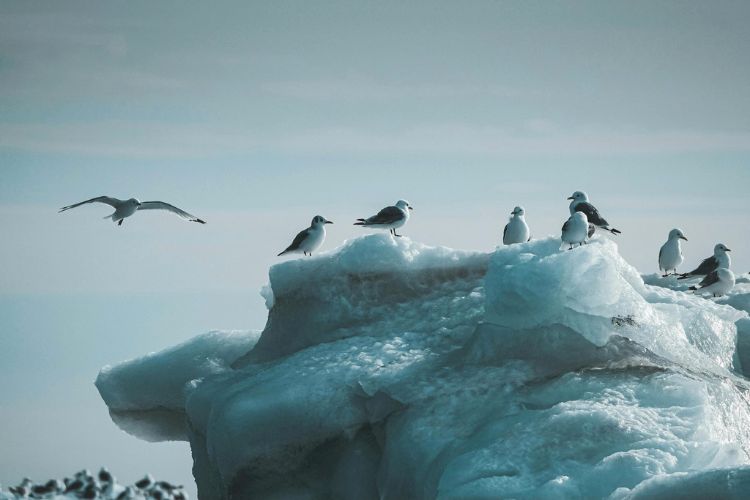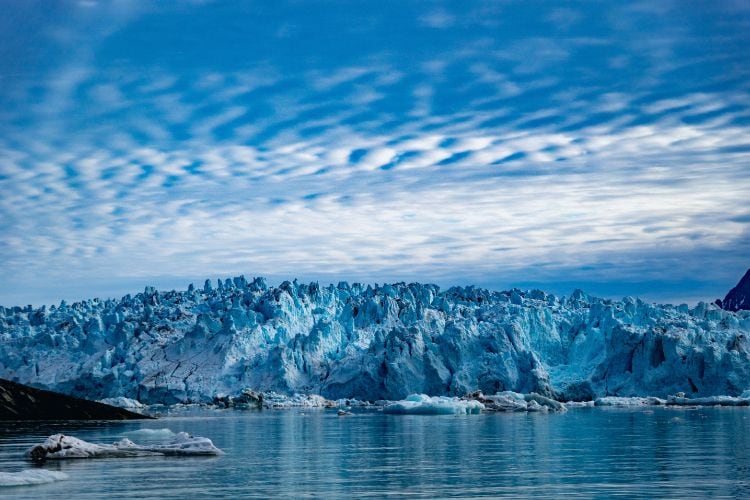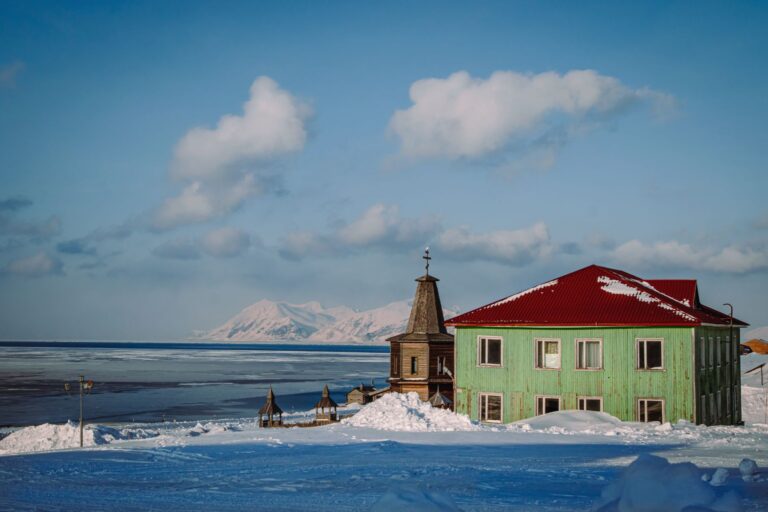
Forget trendy Instagram destinations; I present to you Longyearbyen. This is a place of incredible calm, with gorgeous Northern Lights (Aurora Borealis), the Midnight Sun, stunning glaciers, polar bears and a unique way of life.
Longyearbyen is one of the most isolated communities in the world.
It’s on Svalbard, the Norwegian archipelago governed by the Svalbard Treaty. That means it belongs to Norway (Oslo), but anyone can move here if they can prove that they have a job, money and a place to live.
However, due to the extreme conditions, people usually only stay here for a few years. More about that later.
Svalbard, the gateway to the Arctic Circle, is in the Arctic Ocean between the Barents Sea, the Greenland Sea and the Norwegian Sea.
So, let’s learn 15 fun facts about Longyearbyen. I’m excited because I am sure you haven’t heard of such an interesting destination for a long time.
1. There Are No Births On Svalbard
You will hardly meet anyone who was born on Svalbard. How’s that possible?
Well, Longyearbyen is home to the only hospital in the Svalbard archipelago. This hospital has a small team and offers basic medical services.
As a result of a lack of sufficient care, no children are born on Svalbard. Pregnant women leave the island one month before giving birth and travel to the Norwegian mainland.
Of course, unforeseen scenarios do occur, but these are the exceptions.
2. There Are No Burials On Svalbard
So, there are no births in Svalbard, but there are no burials either. Because of the permafrost, soil remains frozen year-round. Traditional funerals are not permitted because the bodies do not decompose due to the extreme cold.
Furthermore, elderly people and those suspected of being near death are transferred to mainland Norway. They are also buried there, and only cremated remains can be returned to Svalbard.
3. Everyone Carries Firearms Because of the Polar Bears
Can you believe that Svalbard has more polar bears than people? And while Longyearbyen is mostly safe, venturing into the wilderness is very dangerous.
Polar bears roam freely here, so having a handgun is a must. It is really serious; residents learn about safety protocols, and it is also integrated into education at the University Centre in Svalbard.
No wonder polar bears are one of the most dangerous predators in the Arctic. They can weigh up to 1,500 pounds and are excellent swimmers, capable of traveling miles in icy waters. Of course, killing polar bears is only allowed in self-defense.
Still, polar bear sightings are a thrilling experience for many who visit Svalbard.
4. This Arctic Archipelago’s Temperatures Are Extreme
Longyearbyen is one of the most closely populated areas to the North Pole. It is the northernmost town in the world.
During the winter, temperatures in this Arctic archipelago can drop to roughly -30°C (-22°F), particularly in the interior parts. During the summer, temperatures can reach a pleasant 5°C to 10°C (41°F to 50°F), particularly along the western coast.
The area receives minimal precipitation, and the air is almost as dry as in a hot desert.
If you think their summers are cold, prepare to see them wearing t-shirts. It’s warm to them.
5. Longyearbyen is Near the Svalbard Global Seed Vault
You’ve probably heard that there is a place where over 1.3 million seed varieties are stored to be preserved in case of any potential catastrophes, such as natural disasters or global conflicts. Well, that’s near Longyearbyen, more precisely in Spitsbergen.
Fun fact: Svalbard Global Seed Vault has seeds from almost every country in the world.
Why is it here? Well, because of its distant location and permafrost, which creates a natural refrigeration system.
Seeds are stored at -18˚C, which is the international standard for seed conservation.
You cannot visit the Svalbard Global Seed Vault, but you can see it from outside and learn more about its global significance at the Svalbard Museum.
Best Places to Stay in Longyearbyen
6. It’s a Place With Northern Lights
The Northern Lights are one of the most popular tourist attractions when you visit Svalbard. And Longyearbyen is one of the world’s best spots to see the magical Aurora Borealis.
The scenery is stunning and the calm is magnificent. Nestled in the heart of the Arctic, you will enjoy the brilliant dance of greens, purples and pinks that illuminate the night sky during the winter months.
However, if you want to add some adventure, I recommend snowmobiling or dog sledding. Locals and visitors enjoy these nighttime adventures.
Located on Norway’s mainland, Tromsø is another fantastic location to see the Northern Lights.
7. Midnight Sun Lasts 4 Months
Can you imagine living somewhere where the sun does not set for nearly four months? That’s how it is in Longyearbyen between late April and late August.
This natural phenomenon is attracting an increasing number of tourists, and while it is an incredible experience, it can seriously interrupt daily routines.
But the good news is that it makes a day quite long. So join locals and visitors in various outdoor activities, such as hiking, kayaking and animal watching under the midnight sun.
By the way, this amazing phenomenon can also be seen in Iceland, Sweden and even Canada.
8. Polar Night Lasts 4 Months
A sun that does not set for four months may sound like a day when we will have enough time to do whatever we desire, right? But Longyearbyen also has the opposite: Polar Night.
In Longyearbyen, the sun doesn’t rise above the horizon between late October and mid-February. That means that Polar Night covers the town in a deep, enchanting darkness for almost four months.
But scenes are magical: the town sparkles under the glow of the Northern Lights, and the snow-covered mountains are illuminated by the reflections of the moon and stars.
During this period, locals often organize cozy indoor activities, such as social gatherings, art exhibitions and cultural events. Feel free to join them.
9. Wildlife Here Is Really Wild
You know wildlife is truly wild here when the governor of Svalbard highly recommends you carry firearms.
Polar bears are the apex predators that attract many tourists, but Svalbard also has a stunning array of other wildlife. I recommend birdwatching, especially during the summer months. You can see migratory species like puffins, guillemots and Arctic terns.
I’m pretty sure you will also see walruses relaxing on the ice or along the shore. It is also not unusual to see Svalbard reindeer, whales or Arctic foxes.
By the way, did you know that Arctic foxes change their fur color seasonally to adapt to their surroundings?
10. It Was a Coal Mining Town
Longyearbyen was founded in 1906 primarily as a coal mining town. It was named after American engineer John Munro Longyear, who had an important influence on its development.
“Longyearbyen” means “Longyear town” in Norwegian.
After that, the discovery of large coal resources drew prospectors and businesses.
The coal mining industry thrived for decades, providing jobs and attracting people from numerous countries.
11. Longyearbyen’s Residents are Multicultural
Longyearbyen has about 2,600 residents from over 50 countries.
Norwegians, Russians and Thais are the major ethnic groupings, so you know what cultural, traditional and culinary influences to expect.
12. Anyone Can Live in Longyearbyen
If your boss has made you angry today and now you want to move to one of the world’s most isolated communities, I’ve got you covered.
The good news is that you can move to Longyearbyen, wherever you desire. You don’t need a visa or a residency permit.
Citizens from any country can live and work here. Just keep in mind that when you run away from your boss, a polar bear awaits you here. So choose your “hard.”
Joking aside, anyone can live here, but you must prove that you have a job, enough money (you’ll need it; it’s quite expensive) and a place to live. Otherwise, you will be expelled from Svalbard.
13. It Has Many “Northernmost” Places
If you find yourself at Commercial Airport in Longyearbyen, you can say you’ve been to the world’s northernmost airport.
If you attend Dark Season Blues, you can say you’ve been to the world’s northernmost blues festival.
And if you visit a church in Longyearbyen, you can claim to have been to the world’s northernmost church.
14. Arctic Terns “Travel” 43,500 Miles to See the Midnight Sun
Arctic terns are birds famous for their incredible migration journey. They travel from Antarctica to the northernmost regions, including Svalbard.
This migration covers about 70,000 kilometers (43,500 miles). It is one of the longest migrations of any animal on Earth.
They come to Svalbard during the summer. What can I say? You know the midnight sun is truly magnificent when they are willing to fly so far to enjoy it with their young.
15. Longyearbyen is Located Close to a Ghost Town
Why did Pyramiden’s people leave this city in a hurry, turning it into a ghost town overnight? If you find yourself on Svalbard, don’t miss Pyramiden, a Russian ghost town. It will fascinate you. Don’t worry, there are no ghosts here.
You will see the town frozen in time: an unfinished cup of coffee, dishes on the table, notes on the piano, textbooks on the benches—these scenes will make you believe that someone lived here 15 minutes ago rather than nearly 30 years ago.
This ghost town was established in 1910 by the Soviet Union as a coal mining settlement. At its peak, it housed around 1,000 residents, primarily Russian miners. It had amenities such as a school, a sports hall, a hotel, and a post office.
What caused the inhabitants to leave in such a rush that they didn’t even complete their coffee or lunch? Perhaps the northernmost bust of Lenin, which you will undoubtedly notice, can whisper to you.
Inspire your next adventure with our articles below:
Want to discover more hidden gems and helpful travel tips? Join our free newsletter for the latest travel secrets and travel articles.
We are reader-supported and may earn a commission on purchases made through links in this article.
- 15 Fun Facts About Longyearbyen: Norway’s Arctic Frontier - March 22, 2025
- 24 Breathtaking UNESCO World Heritage Sites You Need to See in Your Lifetime - March 6, 2025
- European Adventures: 23 Bucket-List Experiences - March 3, 2025



